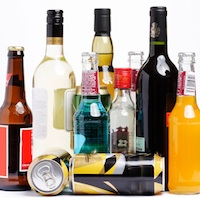
A new online tool draws attention to how young people are exposed to radio ads for wine, beer and hard liquor. The Center on Alcohol Marketing and Youth developed the tool at Johns Hopkins Bloomberg School of Public Health by tracking and analyzing the consistency of alcohol-related ads in 75 radio markets in 2009.
Although many young people rely on television programs and websites for entertainment, radio is still a popular medium. The tool’s creators hope to bring attention to the way that alcohol advertisers seem to target teens in many markets despite the commitment that many alcohol trade groups made in 2003 to target adult-oriented radio shows.
In releasing the tool, the Center’s director David Jernigan, PhD noted that many advertisers need to use more proportional radio marketing to prevent 12 to 20 year-old listeners from being inundated with pro-alcohol ads. Jernigan notes that young listeners are more easily influenced than older listeners and are more at risk for developing problems like dependency after using alcohol. The Center notes that about 4,700 young people die each year from alcohol-related causes, including car accidents and overdoses.
“Alcohol is the leading substance abuse problem among youth in the U.S.,” said Jernigan, “and we know alcohol advertising and marketing have a significant impact on youth decisions to drink.”
The tool asks users to choose an applicable radio market. Visitors can then view exposure estimates for all types of alcohol-related advertising in the market or choose from a list of alcohol types to see specific information on wine, beer and liquor ads. The website tracks out-of-compliance ads, which are defined as ads on shows with a regular audience made up of 30% or more underage listeners, as well as proportional standards and youth overexposure statistics. The tool then displays all of these statistics in easy-to-read graphs with the Center on Alcohol Marketing and Youth’s term definitions clearly explained at the bottom of each page.
Jernigan hopes that the flexible tool will provide key information for parents and lawmakers across the country. The Center also hopes to drive legislation and renewed trade group agreements that limit youth overexposure to alcohol-related advertising.
While the website generates a fairly raw set of data, it will give local health departments across the country a simple way to view important data about youth advertising exposure while drawing attention to out-of-compliance ads in certain markets.
Leave a Reply